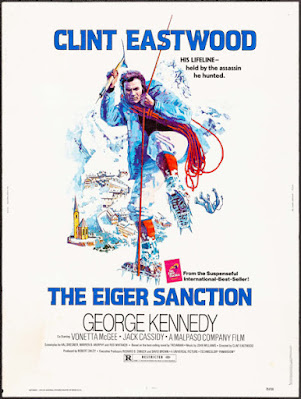Former gambler Jerry (Andrew McCarthy) is a cab driver sleepwalking through life. When a mysterious suitcase filled with money ends up in his taxi, Jerry sees it as his ticket out.
But the money belongs to the mob - and they want it back...

What a breath of fresh rancid air. I have a particular affinity for early nineties action thrillers, particularly when they are man-on-the-run riffs like this. A favourite of this type is the 1991 thriller Run starring future TV hunk Patrick Dempsey.
This movie is an airport thriller on celluloid - it is designed to move quickly from scene to scene so that you do not think about tiresome things like ‘reality’ and ‘logic’. I am not sure I would have enjoyed the movie as much if I was not watching it 2021. A movie like this would not be made now, and if it was it would be a Netflix movie that would be forgotten in five minutes.
While context does play a factor, there is blunt workmanship to Night of the Running Man that works in its favour. It almost plays like a downbeat version of Lester’s Commando (1985), in its pared-down narrative economy and sense of forward momentum.
Its pulp credentials are evident from the off - villain Scott Glenn is introduced in bed with a woman. They have been involved for awhile, but he likes to keep things distant. When she tries to learn more about him, he breaks her neck. Accompanied by a loud sound effect, it is a ridiculously graphic incident that betrays the crassness of the movie. There is a veneer of excess to the violence in the movie that pushes it into the realm of pulp. It is too broad to be taken seriously but not explicit enough to read as docudrama.
While the movie is overheated, it orbits around an ice-cold centre: Scott Glenn as the Terminator-like enforcer Eckhart.
While Andrew McCarthy is the titular lead, it is Glenn who is the main reason to watch. A cold-blooded killer who is a born hunter, he is an almost-supernatural antagonist who will stop at nothing to kill whoever gets in his way.
While the character could have been silly or a blank slate, Glenn’s minimalist performance is terrifying. In a movie that reads like a missing Mike Hammer, Glenn’s subtlety reads with more impact. There is something almost diabolical about Eckhart as he goes about his business - an inevitability conveyed in Glenn’s little smirk that only makes his sudden explosions of violence more terrifying. Glenn is one of cinema’s great underplayers, and having him play the equivalent of a human bomb gives the movie a tension I do not think would be there otherwise.
It helps that the script introduces Eckhart through his actions rather than dialogue - aside from his indifference to human life, he is also a terrifyingly accurate human lie detector. The film is at its best when focused on Eckhart interrogating some poor soul who is trying to cover for Jerry. Glenn does not betray any deeper emotions, letting the audience put together what is going on behind his Spinx-like visage.
A good action movie is only as good as its villain, and Eckhart is a great bad guy. He felt like a missing Michael Mann character - a spiritual sibling to De Niro’s Neil McCauley (Heat) or Cruise’s Vincent (Collateral). That feels like too much praise but Glenn’s performance is definitely worthy, even if the movie cannot match it.
While narratively functional, the movie’s lack of meat is not purely economical - most of the women in the movie die, except for a helpful nurse (Janet Gunn) who comes to our hero’s aid. She gets a few moments of agency, but that goes away once she joins Jerry on the run. Her transformation into a love interest quickly turns her into a damsel in distress.
This final cliche is slightly blunted by the characterisation of Jerry. He is never presented as a physically imposing or aggressive figure. While he is active in improvising his way out of trouble, these actions are mostly reactive, as he finds his attempts to flee Eckhart are foiled at every turn. McCarthy is fine in the role, but it feels like the script is expecting the performance to convey a sense of past bad luck and poor choices - but McCarthy is a little too clean-cut (even with the beard).
A solid little thriller, Night of the Running Man is worth checking out - especially for Scott Glenn’s terrifying performance.
You can subscribe on iTunes, or wherever you get your podcasts.







